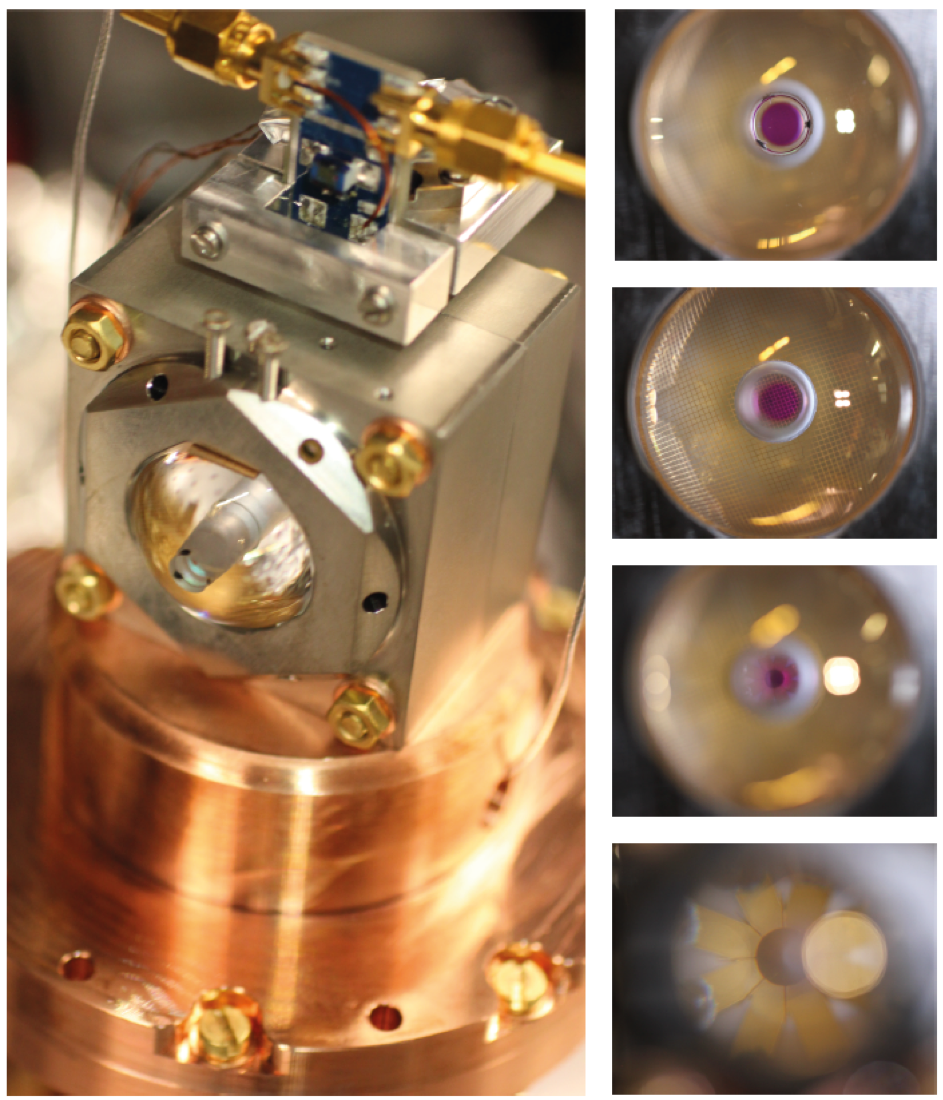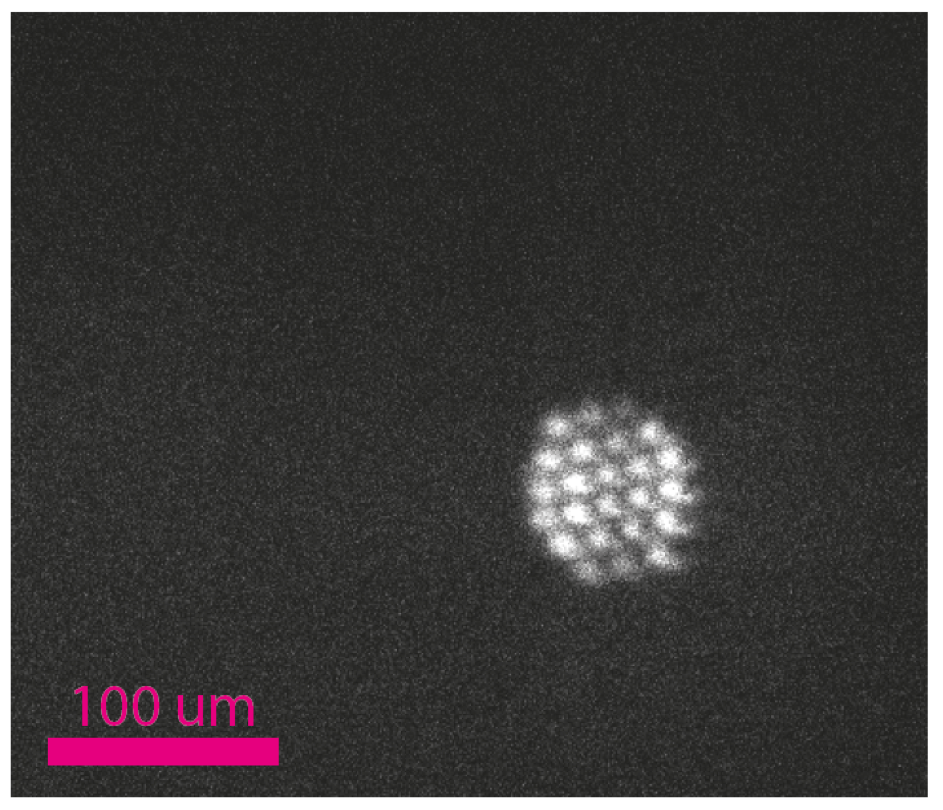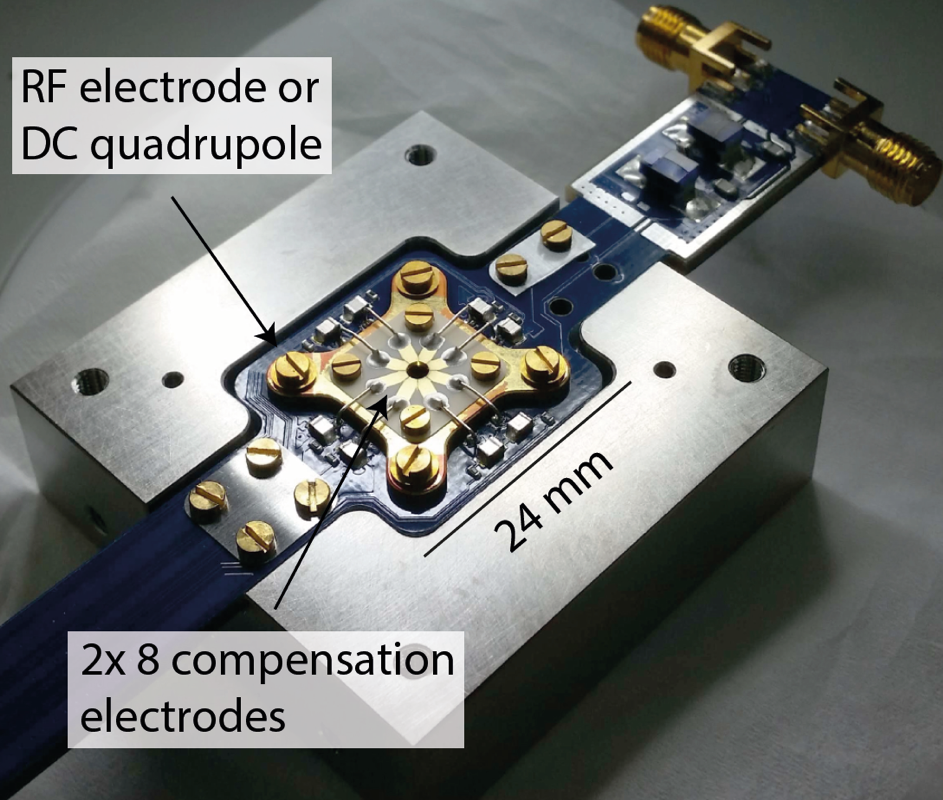Optical trapping
The goal of our setup is to create an experimental platform that can be used to simulate two-dimensional (2D) quantum spin models, using optically trapped ions. Conventional radio-frequency (rf) ion traps are only able to produce a 1-dimensional rf field null, which makes the control of 2D ion crystals challenging. In this project, we aim to use the intensity standing wave of an optical cavity which provides a regularly spaced array of trapping sites that can hold the ions in place, but without any nearby electrodes to contribute to heating.
Keeping more than one ion in such an optical trap is technically challenging because the optical dipole force is quite weak compared to the Coulomb repulsion between the ions. This means that the intensity of the trapping laser must be several orders of magnitude higher than in comparable neutral atom experiments, which is in our case is made possible by the use of a high-finesse enhancement cavity. Additionally, static electric potentials can be used for confinement along the weakly bound directions of the optical lattice as well as for compensation of stray electric fields. The setup is housed in a cryostat in order to reduce background gas collisions.
In addition to our work with ions, we also study neutral Rydberg atoms. By putting the Rydberg electron into a circular state, i.e. a state with maximum angular momentum, the electron wavefunction is an almost classical orbit that minimally overlaps with the core. In this way, it might be possible to use the Rydberg electron as a carrier of quantum information while using the remaining ion-like core to optically trap the atom.
This work is supported by an SNF Consolidator Grant.

A cavity mirror (red glass) is glued into a hole along the imaging lens (curved glass surface). The right image series shows pictures in different focal planes. From top to bottom: The mirror in the lens, gold mesh shielding the ion from patch charges on the lens glass, ion trap seen directly through the red mirror, ion trap seen through the lens.

The cylindrical ion trap creates a two-dimensional psydopotential were ions arrange in a flat Coulomb crystal. Here shown is one of the first multi-ion crystals in the RF trap from December 2018. The oscillating radial field drives the ion's in-plane motion, which disturbs controlled interactions based on Coulomb repulsion. In an optical trap, we would have micromotion-free two-dimensional ion crystals.

